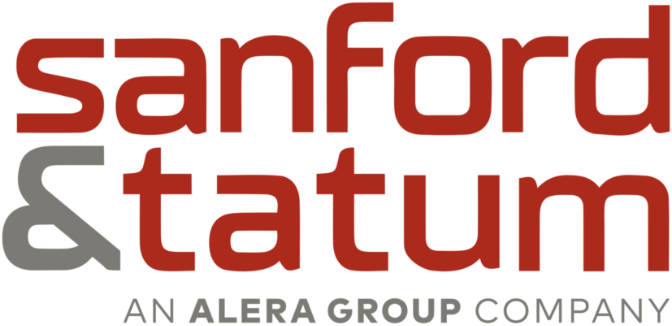
Training for Temporary Workers and Their Worksite Supervisors
Any host employer (HE) that utilizes temporary workers (TWs) through a staffing company (SC) may be opening themselves up to safety and health challenges. When done haphazardly, these nonstandard short- and long-term work arrangements can threaten the safety and health of the workforce and the company. According to OSHA, the HE and the SC are joint employers of TWs, meaning they are both responsible for providing and maintaining a safe work environment for these workers.
One way to ensure a safe work environment is to provide proper training for both TWs and their worksite supervisors. Providing site- and task-specific safety and health training typically falls upon the HE; this training should be provided to all TWs before they start any new assignment, job or task. The training should be “identical or equivalent to that provided to the HE’s own employees performing the same or similar work,” according to OSHA. This article outlines the topics and best practices training should cover for TWs and their supervisors to ensure a safe environment for these workers.
TW Training
Site- and task-specific safety and health training must be in a language and vocabulary TWs understand. The following should be included in the training:
- Approved tasks—Outline tasks TWs are approved to perform as well as any task they are not allowed to perform and any equipment/machinery they are not allowed to operate. Emphasize that the HE must obtain approval from the SC before any new tasks can be implemented. Reporting safety and health incidents and concerns—Employ TWs with the responsibility of reporting all work-related injuries, illnesses
- Hazard identification and control—Train TWs on how to recognize hazards related to the site and task. Be sure to include information on how to best reduce or eliminate such hazards.
- Personal protective equipment (PPE)—Ensure TWs understand what PPE is required for a given task and how to properly utilize it. These items may include:
- Respirators
- Hearing protection
- Gloves
- Eye protection
- OSHA laws—Include information on employer responsibilities and workers’ rights and responsibilities under OSHA law, emphasizing that TWs have the same rights and responsibilities as non-TWs. Rights and responsibilities include:
- The right to refuse dangerous work
- Whistleblower protection rights
- Reporting safety and health incidents and concerns—Employ TWs with the responsibility of reporting all work-related injuries, illnesses and close calls. Any safety and health concerns should be reported to both the HE and SC as soon as possible. Training should include:
- Procedures for how and when to report
- What to expect after reporting
- An emphasis that there will be no punishment or retaliation for reporting
- Secure sites—If necessary, train TWs on how to gain access to secure sites and establish protocols for ensuring personal security when entering.
- Safety and health program participation—Determine ways in which TWs can participate in the HE’s safety and health programs, such as:
- Safety meetings/committees
- Toolbox talks
- Scheduled trainings
- Hazard-specific programs (e.g. hearing conservation, hazard communication)
After training has concluded, HEs should:
- Assess TW knowledge—Ensure TWs understand key concepts by giving them a knowledge assessment in a language they understand. If gaps are found, HEs should repeat the training and reassess the workers’ knowledge.
- Document the training—Include the following on all site- and task-specific training documentation:
- Training completion date
- Names of workers trained
- Names of instructors
- This documented information should be available upon request from the SC, with the HE providing copies of the documentation.
- Evaluate SC training materials—Review any training materials provided by the SC. If they aren’t adequate, the HE should give the SC recommendations on what information would be relevant, such as:
- Specific details of an assigned job
- A basic overview of employer responsibilities and workers’ rights and responsibilities
- Common hazards and protections
Supervisor Training
It’s imperative for HEs to also provide training to any supervisor who will be managing the work of TWs. The following information should be included in the training:
- Approved tasks—Ensure supervisors are aware of the tasks TWs are approved to perform as well as the tasks they are not approved to perform and any equipment/machinery they are not allowed to operate.
- Changes to job tasks—Determine the process for modifying job tasks.
- Mentoring and supervision—Establish that it is the responsibility of the supervisor to provide TWs with identical or equivalent supervision to that of the HE’s non-TW employees. Supervisors should also be aware that some TWs may be inexperienced with the assigned tasks and unfamiliar with the worksite, requiring additional mentoring or supervision.
- OSHA laws—Train supervisors on employer responsibilities and workers’ rights and responsibilities under OSHA law.
- Communication and reporting—Establish protocols for supervisors to communicate with TWs about their performance and safety-related behavior. Encourage supervisors to report all:
- Work-related injuries
- Work-related illnesses
- Close calls
- Safety and health concerns
- Joint responsibilities—Educate supervisors on the roles of the HE and SC in regards to safety and health, including:
- Training
- PPE
- Hazard communication
- Injury and illness reporting and response
- Recordkeeping
Conclusion
By establishing policies and procedures as part of the training process for TWs and supervisors, SCs and HEs can ensure safety and health are prioritized. For more risk management guidance, contact us today.
This Risk Insights is not intended to be exhaustive nor should any discussion or opinions be construed as legal advice. Readers should contact legal counsel or an insurance professional for appropriate advice. © 2022 Zywave, Inc. All rights reserved.

Discussion
There are no comments yet.